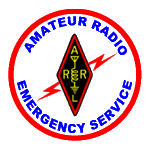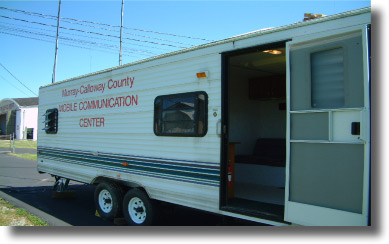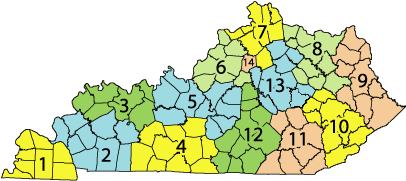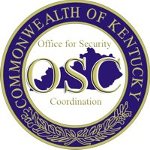
Providing Communications Support for Homeland Security and Natural and Human
Disasters for Calloway County Kentucky and the surrounding
area.
Homeland Security
MSUARC believes that Ham radio is essential to
homeland security in the United States. Our service is a dispersed and decentralized
communications system that can't be shut down by terrorist attack. While public safety
agencies rely on central dispatch stations, amateur radio operators can go on the air just
about anywhere anytime. Hams are trained communicators with technical knowledge that
prepares them to put their stations on the air at remote sites quickly, creating makeshift
facilities when needed. Amateur radio operators don't have to wait for technicians to
arrive to repair equipment or re-program computers. Hams can do it themselves on the fly. |
Natural and Human
Disasters
MSUARC Amateur radio operators have proven
themselves to be essential responders in weather and other natural emergencies, search
operations and disasters of human origin. Hams can go on the air and stay on the air when
ordinary public service communications may fail. For many decades, ham radio often has
been the only means of communicating from a stricken area to the outside world for hours
and sometimes even days.
MSUARC ARES
volunteers recently aided in the search for a downed airplane. Go here for a
story and pictures from the search operation...
|

Communications support is frequently provided from this well
equipped trailer owned by Calloway County. The MSUARC provided assistance in
designing and equipping this facility and is frequently called upon to staff it upon
deployment.

Hams at work inside
the mobile communications center during the Spring 2003 "Disaster Blaster"
Exercise.
The Calloway County
Amateur Radio Emergency Service consists of licensed amateurs who have voluntarily registered their
qualifications and equipment for communications duty in the public service when disaster
strikes. Every licensed amateur, regardless of membership in ARRL or any other local or
national organization, is eligible for membership in the ARES. The only qualification,
other than possession of an Amateur Radio license, is a sincere desire to serve. Because
ARES is an amateur service, only amateurs are eligible for membership. The possession of
emergency-powered equipment is desirable, but is not a requirement for membership.
Calloway County is located in Western
Kentucky, southeast of Paducah. Murray is the county seat.

Calloway county is one of the eight counties in ARES district
1.
BASIC RULES OF EMERGENCY
OPERATIONS (prepared by Bill, KY4NU)
Kentucky Section Emergency
Coordinator:
Ron Dodson, KA4MAP
2265 Hwy 376, Webster, KY 40176, 270-496-4654
Assistant Kentucky Section Emergency
Coordinator:
Ronnie Goodpaster,
AG4TY
70 Ky Hwy 643, Waynesburg, KY 40489, 606-365-9363
Kentucky Emergency Net:
Monday at 20:00 - 3.888 LSB
First District Emergency Coordinator - Bill Slayman KY4NU - ky4nu@arrl.net
County and Local Emergency Coordinators
Weekly net operations are as follows:
ARES Calloway County Emergency Training NET, last Tuesday of each month, 9:00 PM. All
operators interested in emergency communications are welcome to join us on 146.940/.340
MHz. Contact Mark Garland , K4SDI, our Calloway
County EC. Mark also serves as assistant Coordinator for Calloway County Disaster
and Emergency Management.
ARES District One Training NET: Thursdays,
9:00 PM on 147.24/84. Bill
Slayman., KY4NU, DEC District 1. The 147.24/84 repeater is located in
Farmington, Kentucky (Graves County).
The Kentucky Emergency Net (KEN) Every Monday at 7:00 PM CT
on 3.880 Mhz LSB, and as otherwise needed. Offers training each session'
1st Dist ARES NET - Every Thursday at 9:00 PM CT on
147.240 (may change to 147.130) Offers training each session.
Calloway Co ARES NET 3rd Monday of Each Month at
8:30 PM CT on 146.940
Marshall Co ARES NET every Wednesday at 9:00 PM
CT on 147.130
McCracken Co - Purchase Area Emergency, WX and
Tfc Net every Sunday at 8:30 PM on 147.060
Graves Co. To Be Announced
Who Can Join? Calloway County ARES
is open to any licensed Amateur Radio operator in Calloway County. Those living outside
the county are encouraged to participate in our operations, but should join their local
ARES organization. If there is no local organization, we'll be glad to help you start one!
We also encourage you to apply for membership in the Murray State University ARC (MSUARC).
MSUARC membership is not required to join the Calloway County ARES.
For more information, or to join the
Calloway County ARES or the Murray State University ARC contact: Mark Garland, K4SDI ARES
Emergency Coordinator for Calloway County.
Useful Resources:
Additional Information
Organization
There are four levels of ARES
organization--national, section, district and local. National emergency coordination at
ARRL Headquarters is under the supervision of the ARRL Field and Educational Services
Manager, who is responsible for advising all ARES officials regarding their problems,
maintaining contact with federal government and other national officials concerned with
amateur emergency communications potential, and in general with carrying out the League's
policies regarding emergency communications.
Section Level
At the section level, the Section Emergency
Coordinator is appointed by the Section Manager (who is elected by the ARRL members in his
or her section) and works under his/her supervision. In most sections, the SM delegates to
the SEC the administration of the section emergency plan and the authority to appoint
District and local ECs. Some of the ARRL sections with capable SECs are well-organized. A
few have scarcely any organization at all. It depends almost entirely on who the section
members have put into office as SM and whom he/she has appointed as SEC.
Local Level
It is at the local level where most of the
real emergency organizing gets accomplished, because this is the level at which most
emergencies occur and the level at which ARES leaders make direct contact with the ARES
member-volunteers and with officials of the agencies to be served. The local EC is
therefore the key contact in the ARES. The EC is appointed by the SEC, usually on the
recommendation of the DEC. Depending on how the SEC has set up the section for
administrative purposes, the EC may have jurisdiction over a small community or a large
city, an entire county or even a group of counties. Whatever jurisdiction is assigned, the
EC is in charge of all ARES activities in his area, not just one interest group, one
agency, one club or one band.
District Level
In the large sections, the local groups
could proliferate to the point where simply keeping track of them would be more than a
full-time chore, not to mention the idea of trying to coordinate them in an actual
emergency. To this end, SECs have the option of grouping their EC jurisdictions into
logical units or "districts" and appointing a District EC to coordinate the
activities of the local ECs in the district. In some cases, the districts may conform to
the boundaries of governmental planning or emergency-operations districts, while in others
they are simply based on repeater coverage or geographical boundaries. Figure 2 depicts the typical
section ARES structure.
ARES Operation During
Emergencies and Disasters
Operation in an emergency net is little
different from operation in any other net, requires preparation and training. This
includes training in handling of written messages--that is, what is generally known as
"traffic handling." Handling traffic is covered in detail in the ARRL Operating
Manual. This is required reading for all ARES members--in fact, for all amateurs
aspiring to participate in disaster communications.
The specifications of an effective
communication service depend on the nature of the information which must be communicated.
Pre-disaster plans and arrangements for disaster communications include:
Identification of clients who will need
Amateur Radio communication services.
Discussion with these clients to learn
the nature of the information which they will need to communicate, and the people they
will need to communicate with.
Specification, development and testing of
pertinent services.
While much amateur-to-amateur communicating
in an emergency is of a procedural or tactical nature, the real meat of communicating is
formal written traffic for the record. Formal written traffic is important for:
A record of what has happened--frequent
status review, critique and evaluation. Completeness which minimizes omission of vital
information.
Conciseness, which when used correctly
actually takes less time than passing informal traffic.
Easier copy--receiving operators know the
sequence of the information, resulting in fewer errors and repeats.
When relays are likely to be involved,
standard ARRL message format should be used. The record should show, wherever possible:
A message number for reference purposes.
A precedence indicating the importance of
the message.
A station of origin so any reply or
handling inquiries can be referred to that station.
A check (count of the number of words in
the message text) so receiving stations will know whether any words were missed.
A place of origin, so the recipient will
know where the message came from (not necessarily the location of the station of origin).
Filing time, ordinarily optional but of
great importance in an emergency message.
Date of origin.
The address should be complete and include
a telephone number if known. The text should be short and to the point, and the signature
should contain not only the name of the person sending the message but his title or
connection also, if any.
Point-to-point services for direct delivery
of emergency and priority traffic do not involve relays. Indeed, the full ARRL format is
often not needed to record written traffic. Shortened forms should be used to save time
and effort. For example, the call sign of the originating station usually identifies the
place of origin. Also, the addressee is usually known and close by at the receiving
station, so full address and telephone number are often superfluous. In many cases,
message blanks can be designed so that only key words, letters or numbers have to be
filled in and communicated. In some cases, the message form also serves as a log of the
operation. Not a net goes by that you don't hear an ARL Fifty or an ARL Sixty One.
Unfortunately, "greetings by Amateur Radio" does not apply well during disaster
situations. You may hear an ARL text being used for health and welfare traffic, but rarely
during or after the actual disaster. Currently, no ARL text describes the wind speed and
barometric pressure of a hurricane, medical terminology in a mass casualty incident or
potassium iodide in a nuclear power plant drill. While no one is suggesting that an ARL
text be developed for each and every situation, there is no reason why amateurs can't work
with the local emergency management organizations and assist them with more efficient
communications.
Amateurs are often trained and skilled
communicators. The emergency management community recognizes these two key words when
talking about the Amateur Radio Service. Amateurs must use their skills to help the
agencies provide the information that needs to be passed, while at the same time showing
their talents as trained communicators who know how to pass information quickly and
efficiently. We are expected to pass the information accurately, even if we do not
understand the terminology.
Traffic handlers and ARES members are
resourceful individuals. Some have developed other forms or charts for passing
information. Some hams involved with the SKYWARN program, for instance, go down a list and
fill in the blanks, while others use grid squares to define a region. Regardless of the
agency that we are working with, we must use our traffic-handling skills to the utmost
advantage. Sure, ARL messages are beneficial when we are passing health and welfare
traffic. But are they ready to be implemented in times of need in your community? The
traffic handler, working through the local ARES organizations, must develop a working
relationship with those organizations who handle health and welfare inquiries. Prior
planning and personal contact are the keys to allowing an existing National Traffic System
to be put to its best use. If we don't interface with the agencies we serve, the resources
of the Amateur Radio Service will go untapped.
Regardless of the format used, the
appropriate procedures cannot be picked up solely by reading or studying. There is no
substitute for actual practice. Your emergency net should practice regularly--much more
often than it operates in a real or simulated emergency. Avoid complacency, the feeling
that you will know how to operate when the time comes. You won't, unless you do it
frequently, with other operators whose style of operating you get to know.
ARES - When all else fails -
Amateur Radio Emergency Services gets the message through.






